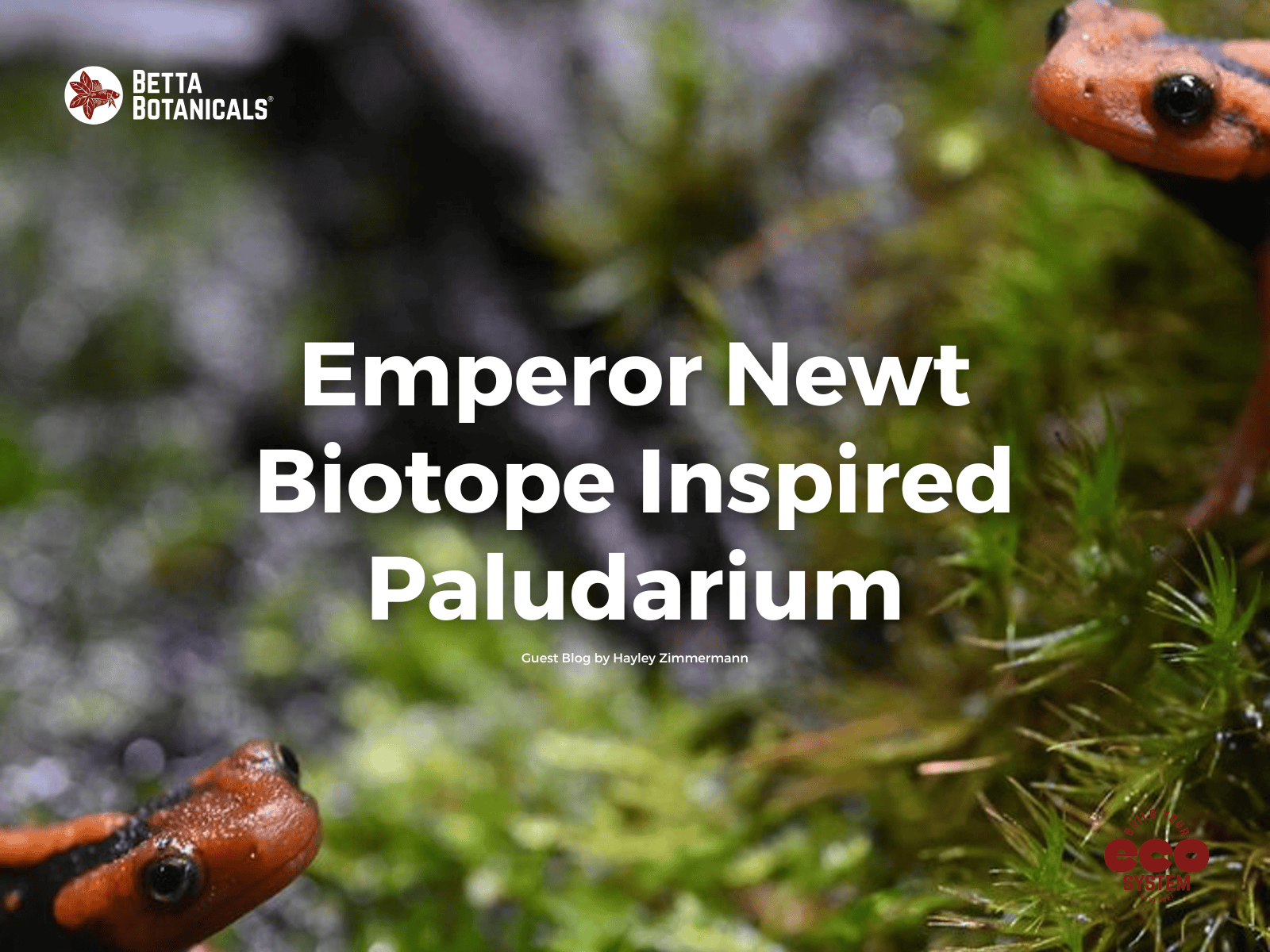Catappa Leaves Benefit All Fish, Not Just Bettas
Tannins are one of the primary markers of botanical method aquariums and have been extensively studied for their beneficial properties. That rich golden-brown water is for more than just looks!
For both beginner and experienced blackwater aquarists, we recommend starting your each botanical method aquarium with a leaf litter layer with tannins from the most commonly used botanical in the hobby, Catappa leaves. But what are Catappa leaves, anyway? Why should I use botanicals in my aquarium? How do I know if botanicals are right for me? Let’s answer some of those pressing questions!
Today, we are talking all things Catappa, from tree to tank!

Catappa leaves contain a beneficial range of compounds to condition the water for your fish.
What are Catappa Leaves?
Catappa leaves come from the Terminalia catappa tree, a large shade tree native to subtropical regions of Asia, including Malaysia. Catappa trees are considered invasive in many parts of the world, having been introduced to coastal ecosystems for human use. Today, Catappa trees can be found from India to West Africa to the tropical Americas — even in parts of Florida.
This tree produces large leaves and edible fruit throughout the year. When the leaves fall and dry, we can collect them for use in our aquariums! Catappa trees drop A LOT of leaves, so collecting them to sell can be very profitable for growers. Catappa leaves are harvested by hand — growers often collect them straight from the ground! You don't have to worry, however, as dried leaves are processed and cleaned before being sold to consumers.
Fun fact: Catappa leaves aren’t the only part of the tree that can be used in our home aquariums. You can also use Catappa bark in aquariums!
A wild Indian Almond Leaf Tree growing in El Salvador captured by our TanninBae Ambassador, Fernando.
Is there a Difference Between Catappa Leaves and Indian Almond Leaves?
Indian Almond Leaves, or IAL, are the most popularly recommended botanical for beginners, especially as a preventative treatment. When your betta starts showing signs of illness, adding IAL to your tank, along with medications, is a must. But what is the difference between Indian Almond Leaves and Catappa Leaves? None! Terminalia catappa is also known as the West-Indian Almond, from which the famed Indian almond leaves get their name. Additional names include the Singapore Almond, Tropical Almond, and Sea Almond. While you will discover results for both Catappa leaves and IAL when shopping, the Indian almond leaf is the most popular trade name on the market for this botanical.
Benefits of Catappa Leaves for Aquariums
Did you know Catappa leaves have long been cited for their healing properties? In tropical and subtropical Asia, leaves are used in folk medicine and folk remedies for fighting illness. It was later discovered that Catappa leaf tannins are as healthy for fish as they are for humans!
Catappa Leaf Tannin Benefits for the Aquarium
There is extensive research regarding the use of Catappa leaves in aquariums. The primary benefit of Catappa leaves is tannins, making them the first choice for the botanical method and blackwater aquarium. Tannins are compounds found everywhere in nature — from wood to leaves to berries and fruits! When added to water, tannins are released from inside the plant's cells and “discolor” the water. Think about what makes your tea that golden-brown color.
Tannins can lower the pH of soft water and provide antibacterial benefits for your fish, as many pathogens cannot survive in acidic conditions. Luckily for both you and your fish, bettas prefer soft, low-pH water! Tannins can act as both a preventative treatment and an active treatment for many fish illnesses. Their use alongside standard medications seems to have a beneficial compounding effect.
You can extract tannins slowly over time by directly adding botanicals to your tank. Or you could brew some tannin “tea”, by preparing your botanicals in a pot of boiling water.
Catappa leaves being prepared on a stove top for use in a Botanical Method Aquarium.
Will Catappa Leaves Lower the pH of my Aquarium?
While it’s true that the use of botanicals can lower your overall pH, buffers can prevent acidification of your water (water is considered acidic if it has a pH of 6.9 or lower). Buffers include carbonates, often introduced via plant fertilizers, aquarium rocks (if untested), or sometimes via crushed coral. If your home water is alkaline or has high carbonate hardness, your pH won’t be as dramatically affected, if at all. When testing your home water for carbonates, check pH, GH, and KH.
If you’re keeping bettas, try to maintain a pH between 6 and 7, with low GH and low KH.
Blackwater, botanical, and planted aquariums at Betta Botanicals HQ.
How Catappa Leaves Help Create a More Natural Aquarium
One of the most common myths surrounding betta care is that wild bettas live in puddles, meaning domestic bettas are fine in small tanks and bowls. Unfortunately, this just isn’t the case! Wild bettas are native to Indonesia, Thailand, Borneo, and many other Southeast Asian Countries, making their homes in rivers, rice paddies, marshy areas, and vernal pools. While it’s true that these environments are shallow like puddles, they can cover thousands of acres!
The end goal of a botanical method aquarium is to mimic a fish’s natural environment. For bettas, both domestic and wild types, start with an appropriately sized tank (a minimum of 5 gallons for domestics and long rather than tall). Then, begin to add your botanicals. Rice paddies and vernal pools are mildly acidic and rich with botanicals and other leaf litter, so adding Catappa leaves and tannin tea is a great way to mimic this! Build up your botanical substrate in your tank to develop a thriving micro-ecosystem complete with dark tannins, beneficial bacteria, and biofilms. If you have especially sensitive fish, the use of Fermented Catappa Leaves is advised as these leaves contain a lower oil content, which can cause a larger beneficial bacterial bloom compared to regular indian almond leaves. Fermented is actually the wrong word, but the trade name has stuck! These leaves are Oxidized, processed by washing and drying repeatedly in saltwater to break up the leaves' cell walls and oil content. The result is a leaf much higher in tannins and lower in oils.
If you have additional tank inhabitants such as snails or shrimp, the biofilms act as a natural food source!
Betta albimarginata in a botanical method aquarium.
Additional Benefits of Catappa Leaves
While the primary benefit of Catappa leaves is tannins, botanicals provide additional health benefits to your fish. Scientific studies show the effects of Catappa leaves on the survival of freshwater fish beyond improving water quality. Many studies on bettas found that tannins from Terminalia catappa boosted both red and white blood cell count in domestic betta splendens. Catappa Leaves grow beneficial biofilms, which are dense colonies of beneficial bacteria, stabilizing the aquarium's cycle while providing a food source to microfauna that can then, intern provide supplemental nutrition to your fish.
Catappa Leaves Benefit Bettas and Other Fish
It turns out that botanicals can be pretty handy in a home aquarium. So, are Catappa leaves for you? For both beginner and experienced aquarists, we say YES! We love using these botanicals to improve water quality, mimic nature, and help grow supplemental nutrition for our tank's inhabitants. Ready to get started in the world of botanical meethod aquariums? Here at Betta Botanicals, we are proud to offer all of your botanical needs – catappa leaves and beyond!
Happy swimming!
Written by Clare Mangan, with edits by TanninBae.












Inspire your friends:
Should You Remove Old Rotting Aquarium Leaves? NOPE!
The Jungle Pod: From Betta Cave to a Tree with Haunted Ghosts
1 comment
Excellent article. Well written… Fun to read… And informative. Thank you! 🙂